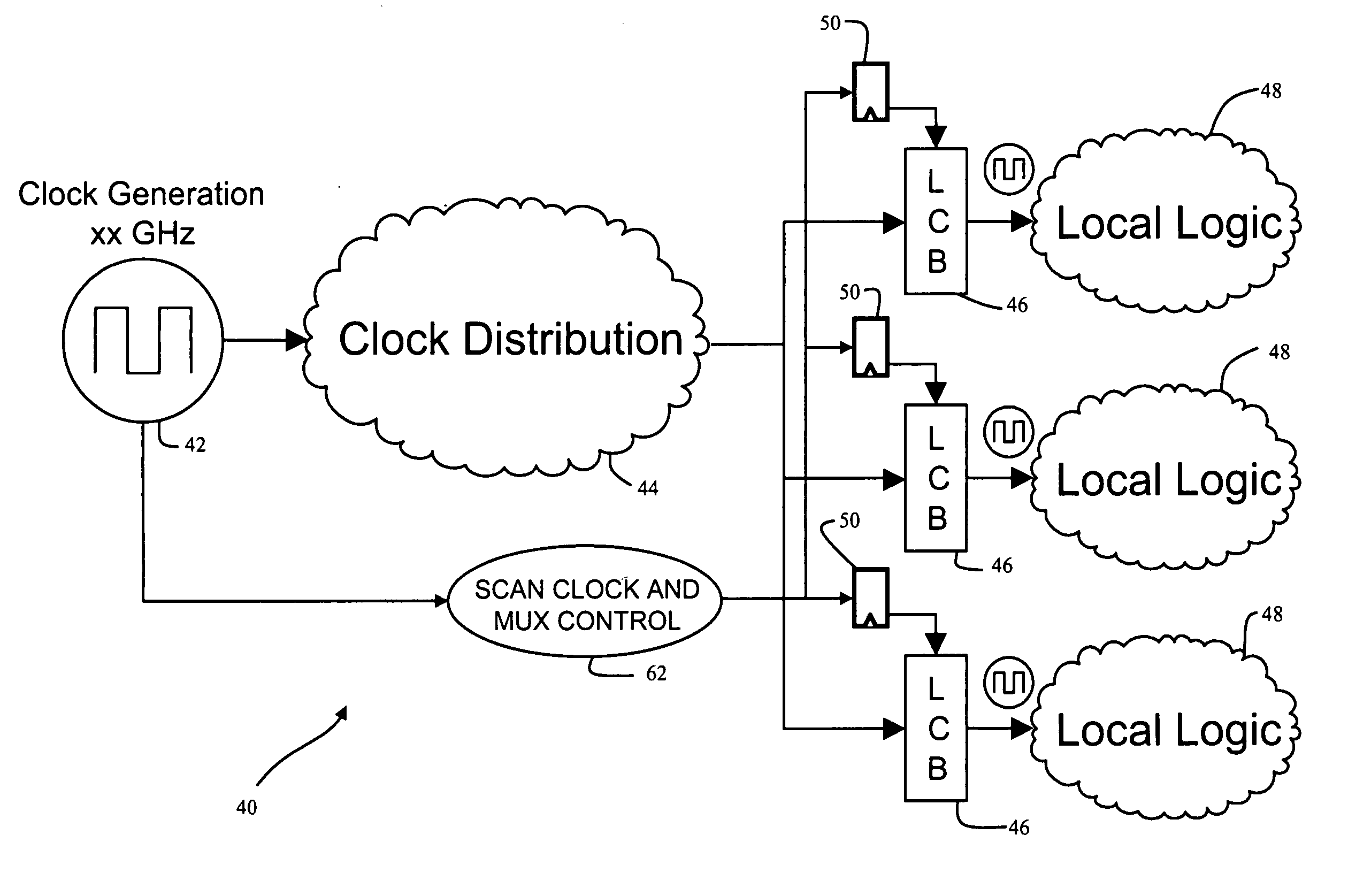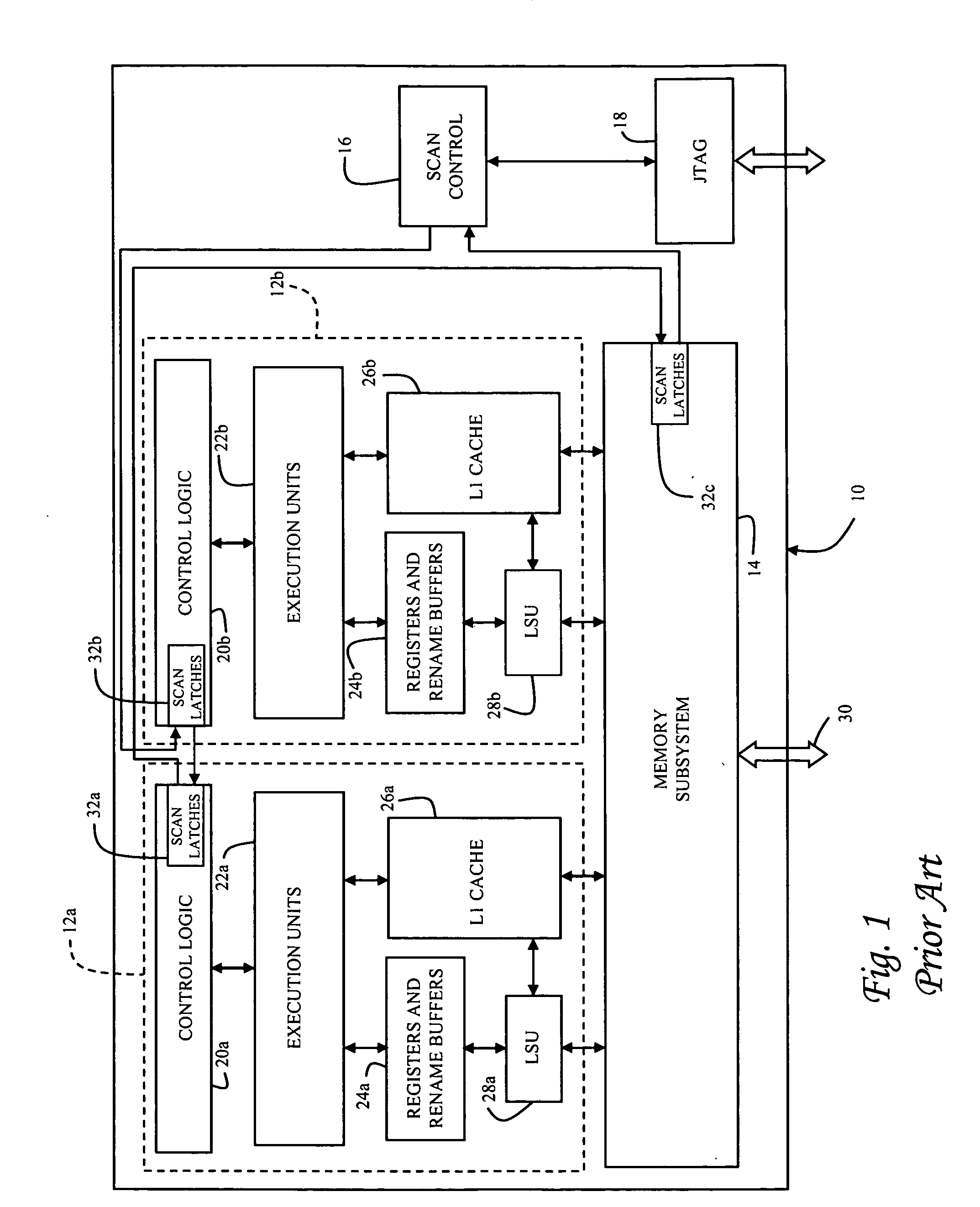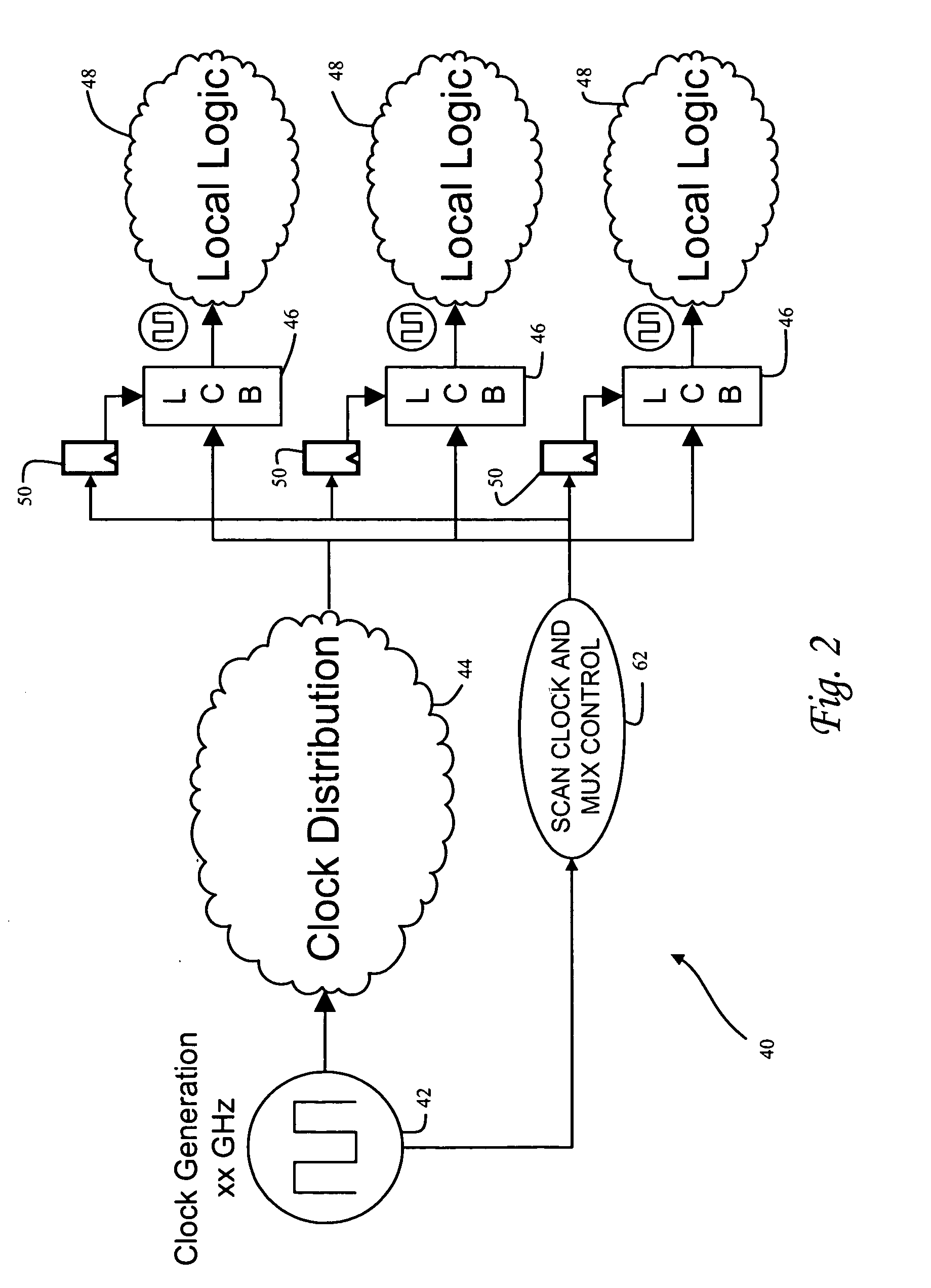Method and apparatus for soft-error immune and self-correcting latches
a technology of self-correction and latches, applied in error detection/correction, instruments, computing, etc., can solve problems such as value upset, system restart, and reduced latch designs, but not eliminated, and solved problems such as upsets
- Summary
- Abstract
- Description
- Claims
- Application Information
AI Technical Summary
Benefits of technology
Problems solved by technology
Method used
Image
Examples
Embodiment Construction
)
[0023] With reference now to the figures, and in particular with reference to FIG. 2, there is depicted one embodiment 40 of a clock control system which utilizes a novel latch circuit constructed in accordance with the present invention. Clock control system 40 is adapted for use within an integrated circuit such as a microprocessor. While clock control system 40 provides one example of how the invention may be implemented, those skilled in the art will appreciate that the invention is not so limited, and may be used in other latch control systems of a microprocessor besides clock control systems.
[0024] Clock control system 40 is generally comprised of a clock generation circuit 42, a clock distribution network 44, and a plurality of local clock buffers (LCBs) 46. Clock generation circuit 42 includes a phase-lock loop to create a master clock signal. The master clock signal is fed to the clock distribution network to render synchronized global clock signals at LCBs 46. Each LCB 4...
PUM
 Login to View More
Login to View More Abstract
Description
Claims
Application Information
 Login to View More
Login to View More - R&D
- Intellectual Property
- Life Sciences
- Materials
- Tech Scout
- Unparalleled Data Quality
- Higher Quality Content
- 60% Fewer Hallucinations
Browse by: Latest US Patents, China's latest patents, Technical Efficacy Thesaurus, Application Domain, Technology Topic, Popular Technical Reports.
© 2025 PatSnap. All rights reserved.Legal|Privacy policy|Modern Slavery Act Transparency Statement|Sitemap|About US| Contact US: help@patsnap.com



